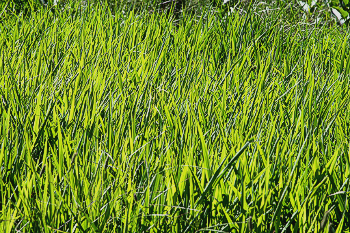An MIT scientist has developed a quick and dirty way to harness solar power using “anything green, even grass clippings.” So basically, solar panels made out of yard waste.
This technology is way, way, way, way below the efficiency of commercial solar panels: It converts 0.1 percent of solar energy into power. Commercial solar panels clock in around 10 to 15 percent; the most advanced lab models are pushing even higher.
But the simplicity of the design makes up for that shortcoming. In theory, anyone could start harnessing solar energy by taking a bag of grass clippings, using an inexpensive membrane to filter out PS-I molecules (responsible for the magic of photosynthesis), and mixing the molecules with a bag of chemicals to stabilize them. Paint the mixture on a roof, and — voila! — solar power.
Bonus biomimicry: Not only does this design riff off photosynthesis, it took inspiration from pine forests to increase its efficiency from “so minuscule it doesn’t matter” to “just really, really small.” Andreas Mershin, the scientist behind this project, designed a “tiny forest of zinc oxide nanowires” to hold to PS-I molecules, so that as sunlight filters down, the molecules can continue to capture it — just like in a forest.



